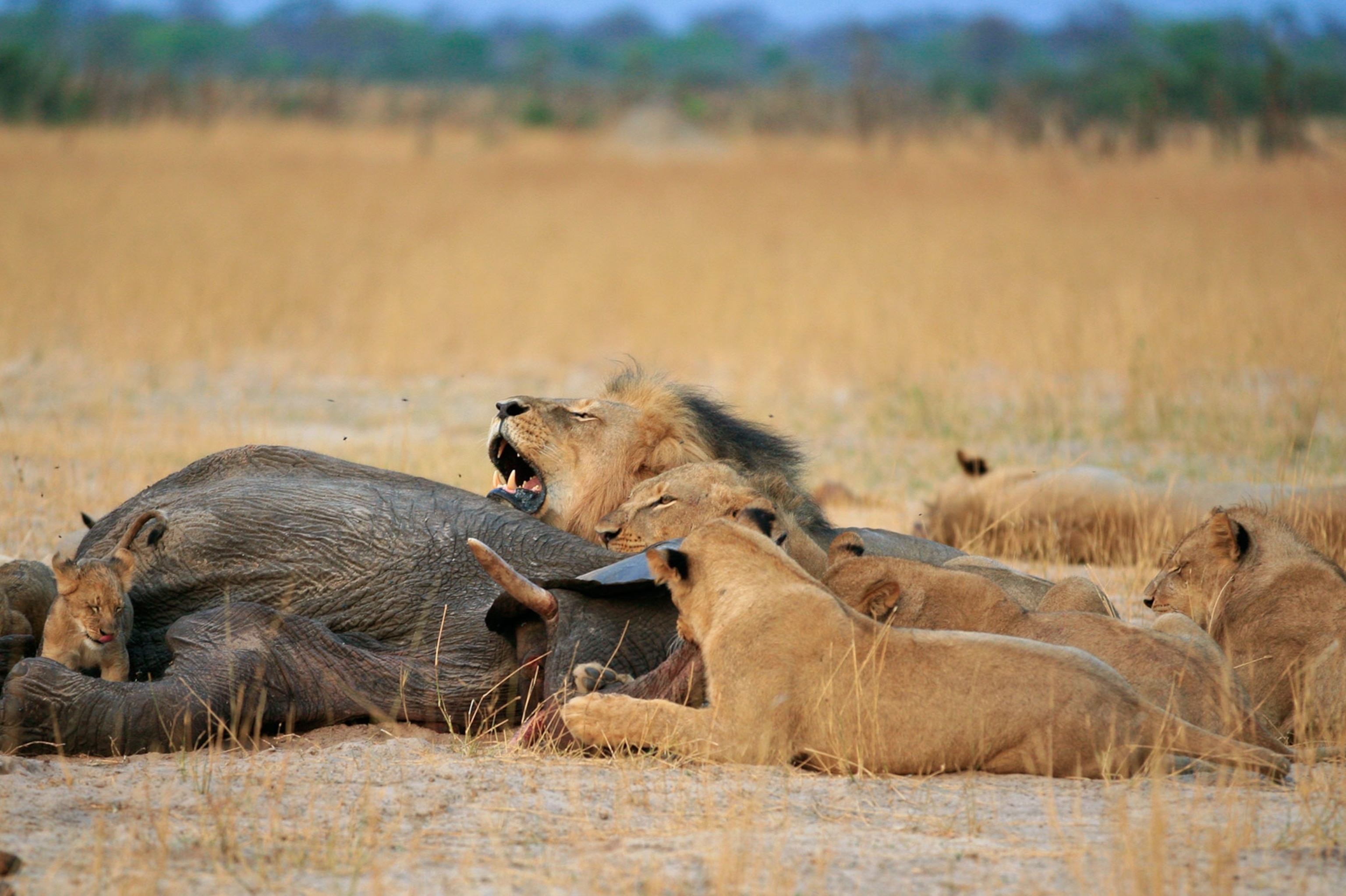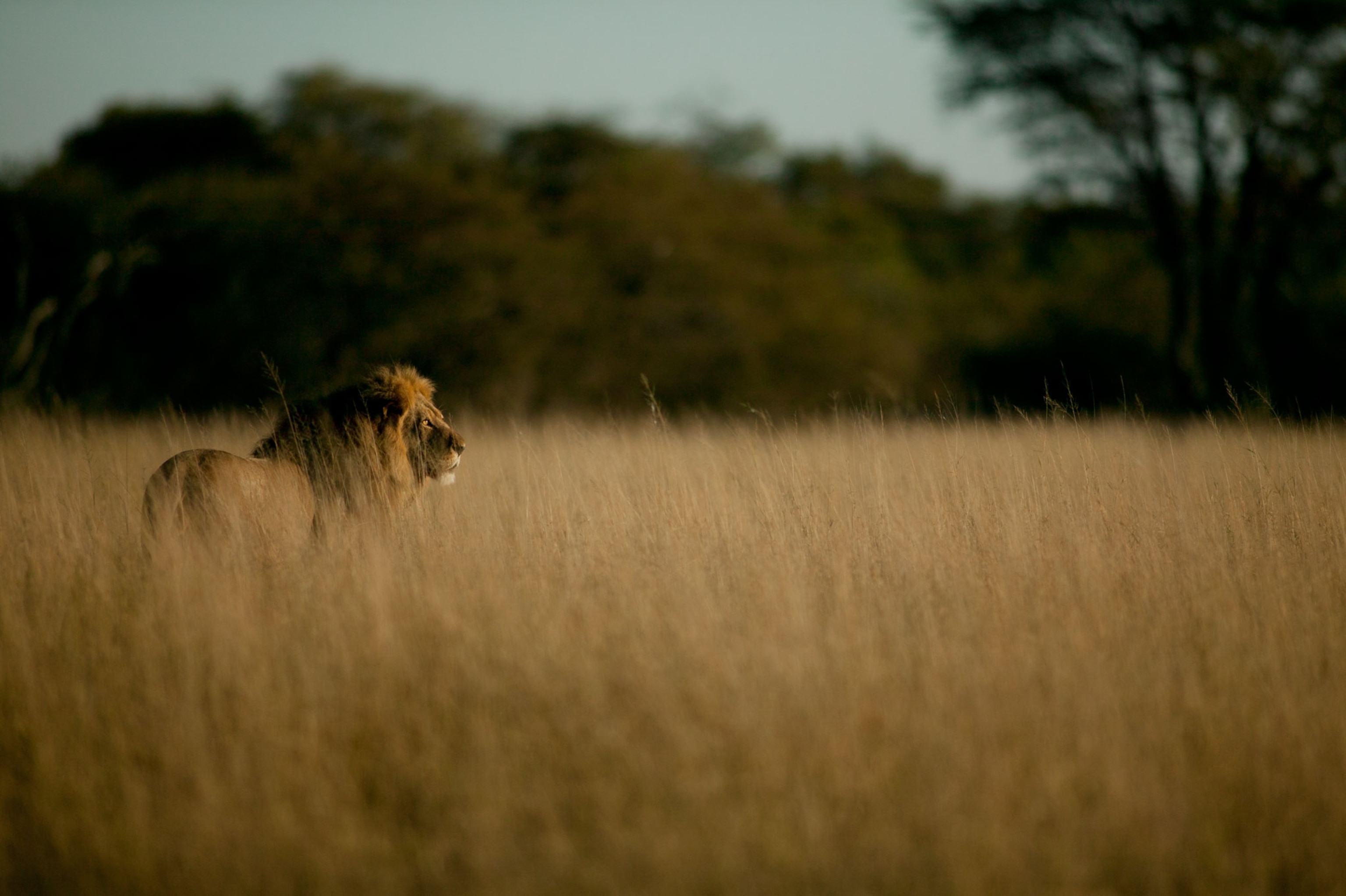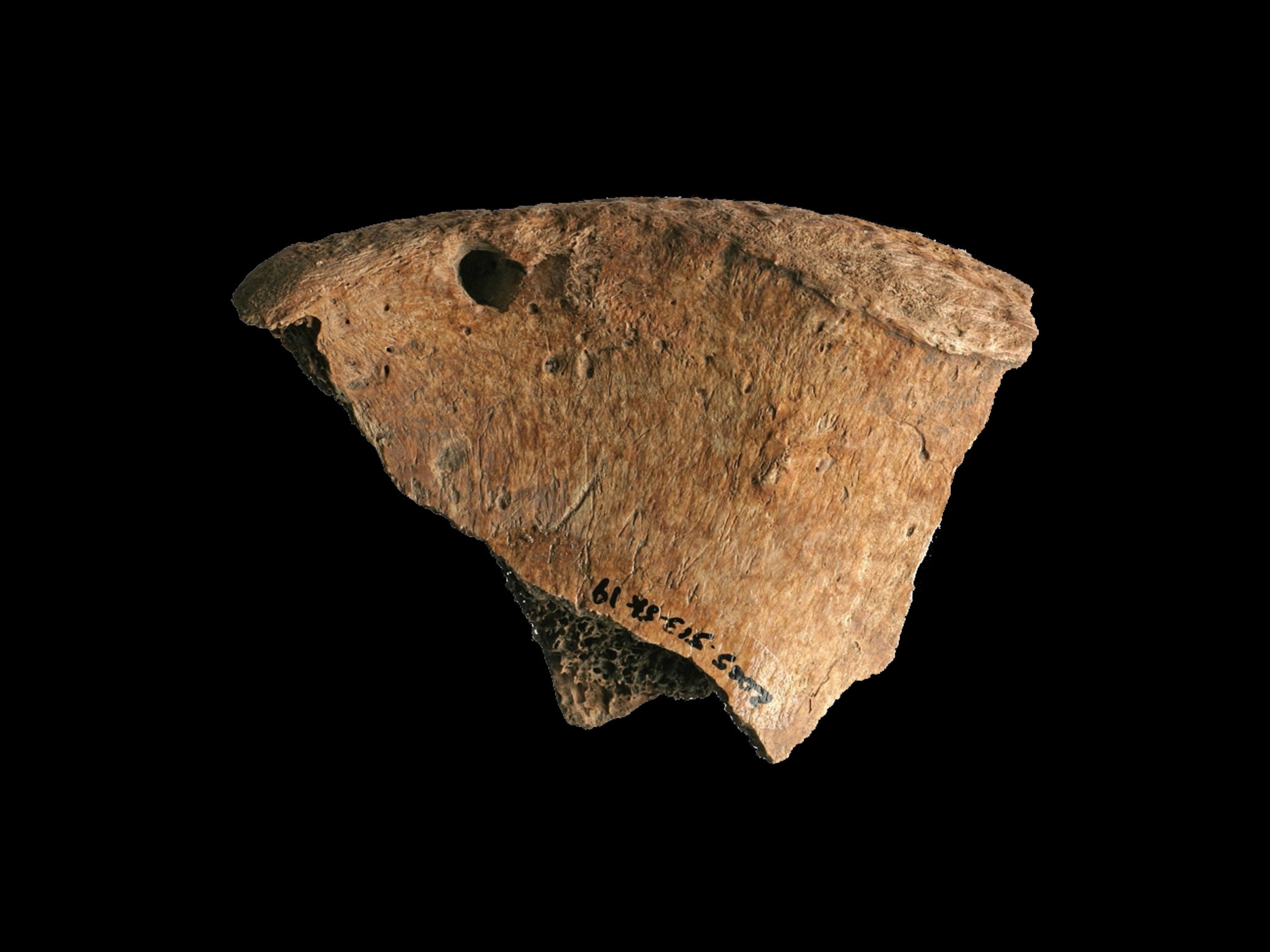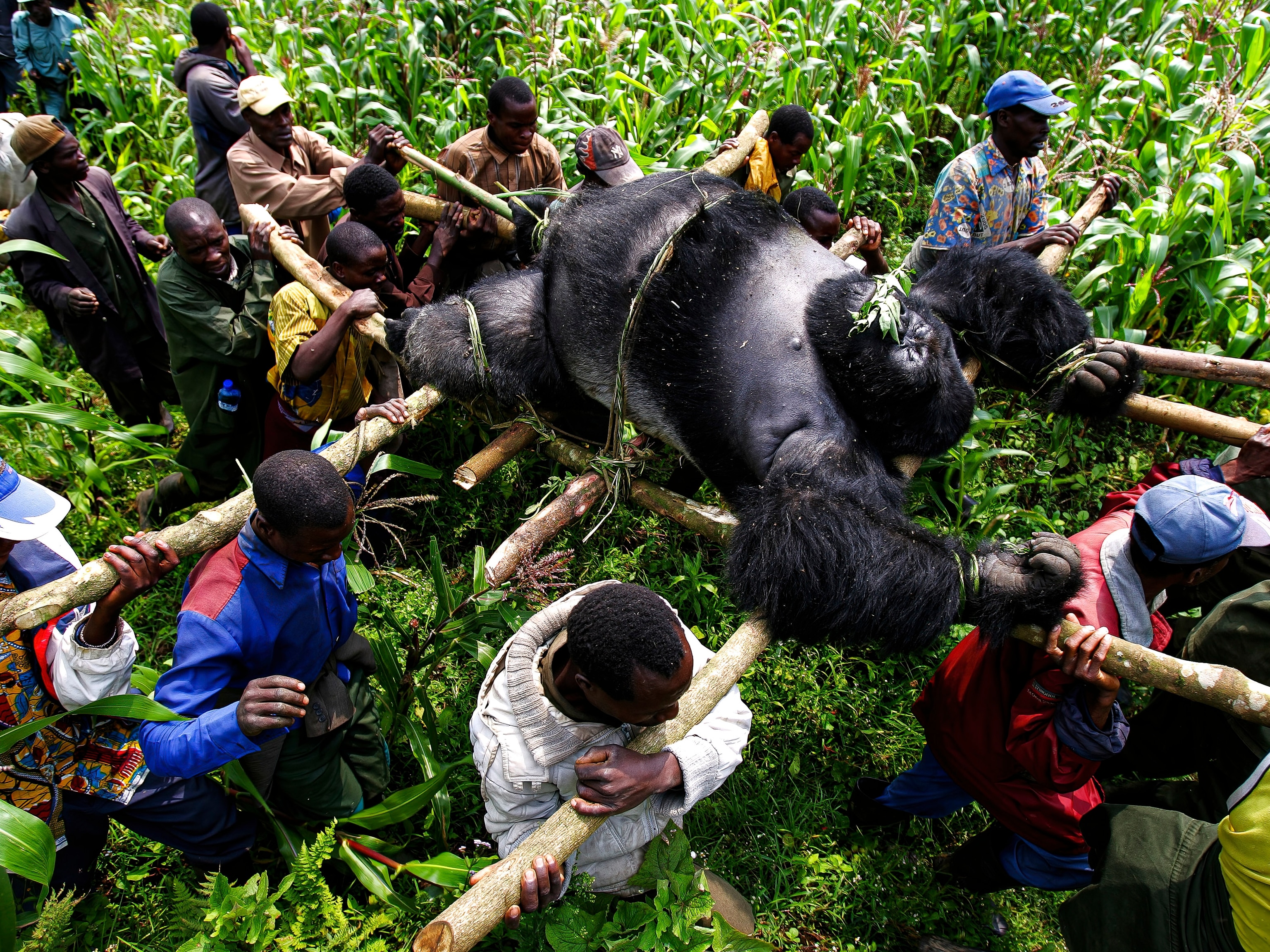Exclusive: An Inside Look at Cecil the Lion’s Final Hours
A new book by lion researcher Andrew Loveridge reveals previously unreported details about Walter Palmer’s killing of Cecil.
When Walter Palmer, the Minnesota dentist and avid trophy hunter, killed Cecil the Lion in July 2015, the incident ignited a furor. For Oxford University biologist Andrew Loveridge, who had been studying Cecil for the past eight years, it was devastating.
The incident spurred the wildlife biologist to take stock of what happened in a memoir, Lion Hearted: The Life and Death of Cecil and the Future of Africa’s Iconic Cats, to be published on April 10 by Regan Arts and exclusively excerpted here by Wildlife Watch. The book also covers lion conservation and behavior.
Loveridge, of Oxford University’s WildCRU, a conservation research unit, is one of the lead researchers in a team studying lions in the Hwange area, in northwestern Zimbabwe, to understand better the complexities of lion societies. According to Loveridge, 42 of their collared male study animals, including Cecil, have been trophy-hunted since the research began in 1999.
The circumstances surrounding Cecil’s hunt are at best murky, and according to Loveridge, media articles have reported factual errors. This excerpt from Loveridge’s book, abridged and edited for style, is based on his interviews with people involved in the hunt, statements made by those involved, and analysis of the location data collected via satellite from the GPS collar Cecil wore at the time he died.
An excerpt of Lion Hearted: The Life and Death of Cecil and the Future of Africa's Iconic Cats is reprinted below with arrangement by Regan Arts, copyright Andrew Loveridge, 2018.
THE AIR BORE THE CHILL of the Southern Hemisphere winter, the Kalahari sand readily giving up the day’s heat to a clear, star-peppered sky. Jackals yipped in the distance. Fiery-necked nightjars called to each other, their shrill onomatopoeic cry—“Good Lord deliver us”—was a plaintive supplication to the silent gods of the African wilderness. Otherwise the night was still.
Cecil, the 12-year-old male lion, padded along the dirt track with leisurely strides, soundless except for the crystal scratch of sand under his soup plate–size feet. His coal-black mane proclaimed his status as the undisputed king of this part of the savanna. He paused only to scent-spray roadside bushes, maintaining his domain’s signposts in a routine he had followed every night since he had become a territorial male nearly a decade before. He underlined his aromatic signature with vigorous scrapes of his hind paws.
The scent of a dead elephant drew the lion forward, enticing him to what long experience had taught him was another free meal. He had often fed on elephants. But there was something different about this carcass, something beyond this cat’s experience of things to avoid. He could sense the presence of humans. No matter how quiet we think we are, how little scent we think we exude, animals pick up the tiniest cues. The rustle of clothing, the smell of toothpaste and deodorant, gun oil and plastic—they all stand out in a wild animal’s sensory world like a snowflake in a coal mine.
Humans didn’t worry him. He was used to their scent from years of living in a prime photographic safari concession in the park. But these were not the humans he knew. To minimize the scent and sound that would drift across the clearing, these humans were hiding in a tree platform downwind of the carcass. Crouched on a small platform was an American with a broad, white smile, a powerful compound bow, and a quiver full of lethally sharp arrows. He was flanked by a stocky Zimbabwean guide.

It would have been freezing cold to sit agonizingly still in the cramped hide, but the hunters would have comforted themselves that the wait wouldn’t be long. This was an easy lion to hunt—a park lion, well-fed and habituated to people.
The big cat sniffed the clearing. The draw of the elephant meat overcame the lion’s caution, and he approached the carcass. He settled down to feed, tearing at the tough, dry meat with scissor-like teeth. He fed for a few minutes, oblivious to the hunter taking up the tension on his bow.
OUR RESEARCH PROJECT STAFF only became aware that something was amiss six days later. Project field assistant Brent Stapelkamp was routinely checking all the GPS downloads from the satellite collars we’d fitted on the study lions. He noticed that Cecil’s satellite collar hadn’t transmitted any data since July 4. Initially he assumed that the collar had malfunctioned, although this seemed surprising given that it had recently been fitted, and its batteries were new.
Then on July 7 project staff started to hear that a lion had been hunted in the Gwaai Conservancy, a privately owned wildlife area adjacent to Hwange National Park, where we study lions.
In the small Hwange community, nothing of any consequence stays secret for long. Brent was sufficiently concerned to alert the National Parks management staff at Main Camp that an illegal hunt may have taken place. The park senior ecologist replied, “No legal hunt for a lion this year” and asked that the seemingly illegal hunt be reported to the National Parks wildlife officers at Hwange Main Camp.
Since there was no paperwork for a lion hunt in the areas concerned, and no quota to hunt a lion in the Gwaai, the senior wildlife officer ordered an investigation. National Parks requested that our project assist them by providing transport. Andrea Sibanda, one of the project field assistants, duly drove a National Parks ranger to investigate the rumors.
Andrea had started his conservation career as an anti-poaching ranger. His detective training in wildlife crime came in handy during the following days. He and the ranger’s first port of call was the Hide, a photographic safari lodge.
A friend of Andrea’s had mentioned that some hunting staff from Antoinette farm—a 25-five-square-kilometer parcel located in the Gwaai—had visited the Hide a few nights before. They were flush with money and looking to buy booze. On consuming the same, they became talkative and were soon boasting about the huge lion that had been hunted a few days before. This successful hunt had resulted in their receiving a large tip from a very satisfied trophy hunter.
The Hide camp staff suspected that the lion killed was Cecil, one of the two magnificent male lions for whom they had developed a special affection. Only one of the area’s males, Jericho, had been seen since July 1, and he had spent several nights calling—in their opinion calling for his dead friend Cecil.
Armed with this information, Andrea and the ranger visited Antoinette farm. The wily Andrea soon extracted information out of the hunting camp staff there. The park ranger obtained signed statements from tracker Cornelius Ncube, who had assisted with the hunt, and camp skinner Ndabezinhle Ndebele, who had skinned the dead lion.
According to Cornelius, another hunting client had shot an elephant the previous week. The owner of Antoinette farm, Honest Ndlovu, had instructed the camp staff to keep an eye on the elephant carcass and to inform him if any lions came to feed. As it happened, two large males and a pride of females came to feed on the carcass the night after the hunt. This was reported to Ndlovu.
ON JULY 1 CORNELIUS WAS INSTRUCTED to prepare for a lion hunt, which would be undertaken by a foreign client, later identified as Walter Palmer, a dentist from Minnesota. Guiding Palmer would be Zimbabwean professional hunter Theo Bronkhorst and his son, Zane.
The hunting party arrived at the Antoinette camp at mid-morning and settled into their rustic accommodation. In the late afternoon Bronkhorst took Cornelius to the elephant carcass, which they moved, presumably by dragging it behind a Land Cruiser, to a suitable location approximately 300 meters away. Cornelius then assisted with the construction of a platform and hunting blind in a nearby tree overlooking the elephant carcass. Blind completed, Cornelius was then driven back to camp. Bronkhorst and Palmer later returned to wait for a lion.
In the early hours of the next morning Bronkhorst returned to the camp and woke up Cornelius, instructing him to come and assist them with a wounded lion. The professional hunter stated that they “had shot a lion with a bow and arrow, and they were waiting for it to die.
This is somewhat at odds with Bronkhorst’s own account of the incident—as related to Peta Thornycroft, a reporter for Britain’s Telegraph—in which he claimed he was unsure whether the lion had been hit by Palmer’s arrow.
Cornelius returned to the scene of the hunt with Bronkhorst and noted that in the darkness he could “hear [the lion] struggling to breathe.”
It is clear that Cecil was at this stage mortally wounded and hadn’t moved far from where he was shot. This is corroborated by the GPS data from Cecil’s collar, which allows a forensic reconstruction of events. The collar sent a position from the hunt site at just before 9 p.m. By 11 p.m. the collar’s position had moved 80 meters roughly southeast from the carcass. It therefore seems probable Cecil was shot at some point between 9 p.m. and 11 p.m. on July 1.
Subsequent positions sent from Cecil’s collar show that he moved in a southeasterly direction until 7 a.m. on July 2. In about eight hours the wounded animal had moved only 160 meters from the point at which he’d been shot. Eventually, according to Cornelius, Bronkhorst advised Palmer to “finish the lion off.” If Bronkhorst’s later statements are accurate, the hunters went to administer a coup de grace at around 9 a.m.
Leaving Cornelius in the hunting blind, the pair went off in the vehicle to find the lion. According to the collar’s GPS data, by now Cecil had moved a distance of about 350 meters from the point where he was wounded. A second arrow killed Cecil. Bronkhorst and Palmer returned to the hunting blind about 45 minutes later with the dead lion in the back of the hunting vehicle.
In media reports it was widely touted that Cecil suffered in agony for 40 hours. This claim is inaccurate and exaggerated. It’s unlikely he’d have lived that long with such a severe thoracic injury. However, he most definitely did not die instantly and almost certainly suffered considerably. Judging from the events described by Cornelius and the data sent by the GPS collar, the injured lion most likely was killed 10 to 12 hours after being wounded.
THE HUNTERS THEN RETURNED to the camp, and Cornelius and Ndabezinhle, the skinner, were instructed to skin the dead lion and begin preservation of the trophy. Normally this would involve removing and salting the skin, which must be done promptly to avoid damage to the hide. Later the head would be removed from the carcass, and the tissue stripped off. The head would then be boiled and cleaned to the bone. Together, the skin and cleaned skull make up the “trophy” that a hunter would take home for display.
But Cornelius and Ndabezinhle were ordered to leave the skinned carcass intact and load it onto the hunter’s vehicle, along with the preserved skin. This was unusual, as the carcass, minus skin and head, has little value and is usually discarded in situ.
Bronkhorst and Palmer then drove off, according to both Cornelius and Ndabezinhle, heading for Matetsi a few hours’ drive away. It seems likely that Bronkhorst, well aware that there was no quota for a lion to be hunted on Antoinette farm, was removing any evidence of the hunt. It is also probable that he was intending to report the lion as having been hunted in Matetsi Safari Area, or one of the other hunting areas northwest of Hwange, where there were lions on the hunting quota. This administrative sleight of hand is known as “quota swapping” and is unfortunately common in the hunting industry.
There were other anomalies in the case that carry a heavy whiff of impropriety. The National Parks manager of the area had previously mandated that a ranger accompany trophy hunts for lions in the Gwaai area to ensure that all necessary regulations were followed. This local regulation was not adhered to.
Another thread of evidence suggests that the hunters had every intention of concealing their activities. Cecil’s satellite collar had functioned perfectly until 6:53 a.m. on July 4, two days after the lion was killed. Thereafter it ceased to send any further information and vanished without a trace. This seems an odd coincidence. Cornelius, the tracker, says that when he saw the dead lion in the back of the hunting vehicle, there was no collar. But he noticed that “the mane looked separated in the neck as if it had previously been caught in a wire snare.” This suggests that Bronkhorst and Palmer removed the collar in the 45 minutes between driving off in search of the wounded animal and returning with the lion’s body in the vehicle.
Bronkhorst claimed in media interviews that he hadn’t known that the lion was collared and wouldn’t have hunted it if he had known. Palmer, once his involvement had been publicly revealed, stated that he “had no idea that the lion [he] took was a known, local favorite, was collared and part of a study until the end of the hunt.” Bronkhorst admits that he “panicked” when he first saw the collar, which he then removed and hung in a tree close to where the lion had been killed. He later bemoaned the fact that he hadn’t handed it in to the National Parks officers. Clearly this would have been the responsible and ethical course of action, though one that would have required an explanation of how his client had come to hunt a lion in an area with no hunting quota.
Walter Palmer allegedly paid $50,000 to shoot Cecil the lion with his bow. He didn’t deny that he’d hunted the lion, nor that the hunt had taken place in a restricted area. He claimed to have relied on his hunting guide, Bronkhorst, to obtain the necessary permissions, which is not unreasonable given that he was paying a considerable sum for the professional hunter’s services.
In a public statement, Palmer maintained, “Again, I deeply regret that my pursuit of an activity I love and practice responsibly and legally resulted in the taking of this lion.”
It’s possible that Palmer was remorseful and—in hindsight, knowing the hunt was likely to have been illegal—regretted his involvement. Nevertheless this was not the first time Palmer was alleged to have been involved in an illegal hunting trip. Following the furor over the Cecil hunt, American media uncovered his participation in a similar incident nine years earlier. On that occasion Palmer shot, again with a hunting bow, a large black bear in Wisconsin. Yes, he had a permit to hunt a bear, but he reportedly shot it 40 miles from his permit’s stipulated hunting area. It’s alleged that he subsequently offered substantial financial inducements to his hunting guides to lie about the location of the hunt.
Unfortunately for Palmer, the guides spilled the beans when the United States Fish and Wildlife Service investigated the bear incident. Palmer was charged with and, according to media accounts, found guilty of making false statements to a federal investigator, a felony. He received a fine of less than $3,000 and a year’s probation—effectively only a slap on the wrist.
In both cases Palmer appears to have gone to considerable lengths to obtain particularly large hunting trophies, exhibiting the obsession many wealthy American hunters have for getting record kills entered into the “trophy book” hunting associations such as Safari Club International keep for their members. According to Bronkhorst, after the successful lion hunt, the American asked whether “[they] would find him an elephant [with tusks] larger than 63 pounds.” Elephant trophies are traditionally measured by the weight of the largest tusk.
As Bronkhorst himself noted, this would require a prime-age elephant of a size that’s increasingly rare across Africa. Bronkhorst, perhaps regretfully, had to tell the avid hunter that he couldn’t find such a large elephant. It should also be noted that as of April 2014, the U.S. Fish and Wildlife Service had banned all imports of elephant hunting trophies from Zimbabwe under the Endangered Species Act. This ban was still in place in 2015. If Palmer had succeeded in killing a giant pachyderm, it’s unclear how the collector of exceptional trophies planned to get the ivory home.
WHAT I FIND MOST DIFFICULT about the whole incident is the apparent callousness with which the hunters undertook this hunt. The lion was a commodity to be collected, “taken” in hunting parlance. Concern for the pain and suffering of the animal never seems to have been a particular consideration. I find the thought of killing any animal purely for sport or pleasure abhorrent, but if it has to happen, it must be done cleanly and without undue stress or suffering.
Cecil suffered incredible cruelty for at least 10 hours, severely wounded and slowly dying. Cornelius recalled hearing the animal “struggling to breathe.” Clearly, although the wound was severe, the arrow had missed the vital organs or arteries that would have caused rapid blood loss and a relatively quick death. Certainly, the lion was so incapacitated that in all those hours he’d been able to move only 350 meters from the place where he was shot.
To kill a quarry animal quickly and efficiently is the hallmark of a good hunter. Yet Bronkhorst and Palmer had allowed an obviously stricken and mortally wounded animal to suffer for more than 10 hours before attempting a final kill. Perhaps part of the explanation is that Palmer was hoping to submit this obviously large trophy to a hunting record book as a bow-hunted specimen. This precluded the use of a firearm to dispatch the animal, as that would render the trophy ineligible as a bow-hunt record. One possibility, therefore, is that the hunters were content to leave the lion to die from its first catastrophic injury with no further intervention. When the lion didn’t oblige them, they were presented hours later with the inconvenience of shooting it with another arrow. If this was the case, Cecil the lion died slowly and painfully to allow a hunter the ultimate vanity of claiming he had killed a huge lion with a bow and arrow.
I clearly recall the last time I saw Cecil. It was May 2015. My colleague Jane Hunt and I had been tracking him via the signal from his collar. We followed him a short distance before he flopped down on the road. From the scrub, spur fowl cackled their displeasure as he lay leisurely sniffing at the early evening breeze. We sat in the Land Cruiser a few meters away, taking photographs. He couldn’t have been less concerned by our presence.














